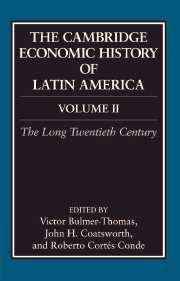Book contents
- Frontmatter
- Introduction
- Part I Cycles of Globalization
- Part II Onset of Modernization
- Part III Factor Endowments
- Part IV Sectoral Development and Equity
- 12 Structure, Performance, and Policy in Agriculture
- 13 The Political Economy of Industrialization
- 14 Poverty and Inequality
- Bibliographical Essays
- Index
- References
13 - The Political Economy of Industrialization
from Part IV - Sectoral Development and Equity
Published online by Cambridge University Press: 28 March 2008
- Frontmatter
- Introduction
- Part I Cycles of Globalization
- Part II Onset of Modernization
- Part III Factor Endowments
- Part IV Sectoral Development and Equity
- 12 Structure, Performance, and Policy in Agriculture
- 13 The Political Economy of Industrialization
- 14 Poverty and Inequality
- Bibliographical Essays
- Index
- References
Summary
This chapter builds on recent research by scholars across a broad number of countries and disciplines to offer a reinterpretation of the history of Latin American industrialization. It departs from the standard view that underlies much of the literature on Latin America’s economic history: that Latin America had open, “export economies” from the 1870s to the 1930s, and that these export economies were then dramatically transformed into “import-substituting” economies during the period 1930–80.
Obviously, the history of industrialization was not the same in Bolivia as it was in Brazil - there was considerable variation from country to country, with the smaller economies of the region generally industrializing later and less completely than the larger economies. Capturing both the general trends and the specifics of each case would exceed the space limitations of a single chapter. I therefore concentrate my analysis on four cases: Argentina, Brazil, Chile, and Mexico. I have chosen these cases because they account for three quarters of total Latin American gross domestic product (GDP) and because they are (and historically were) the most heavily industrialized countries in the region. Other countries certainly have (and had) manufacturing sectors but, as a practical matter, when we speak about Latin American industry, we are really speaking about the manufacturing sectors of Argentina, Brazil, Chile, and Mexico.
- Type
- Chapter
- Information
- The Cambridge Economic History of Latin America , pp. 537 - 584Publisher: Cambridge University PressPrint publication year: 2006
References
- 31
- Cited by



